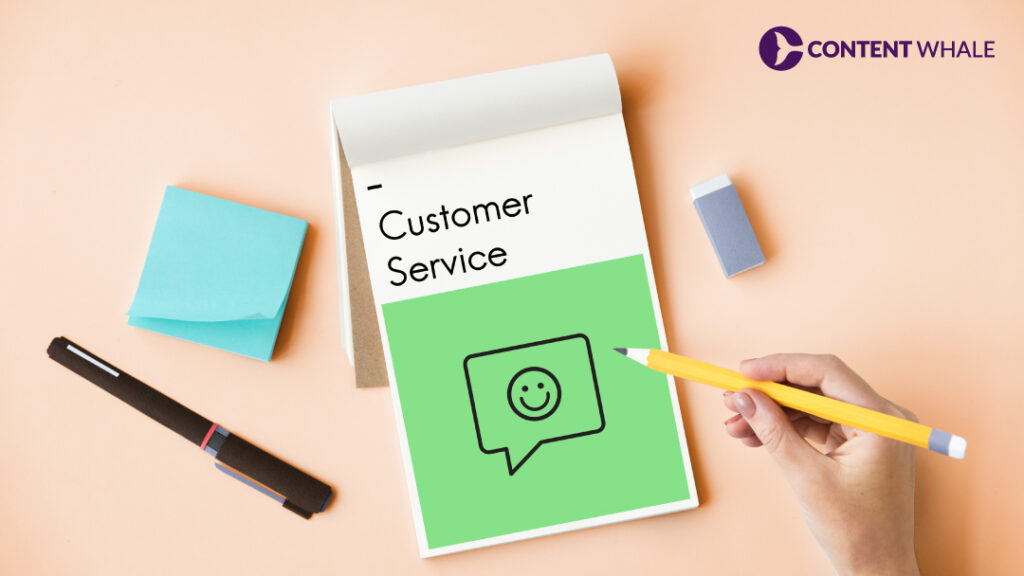Social media has quickly become a primary channel for customers to reach out to businesses for support. Whether it’s answering questions, addressing concerns, or providing real-time assistance, how a brand handles customer service on social media can significantly impact customer satisfaction and brand loyalty.
This blog will offer ten practical strategies to improve your social media customer service. These tips are designed to help you enhance online engagement, streamline your social media strategy, and deliver top-notch customer support. By the end, you’ll have the tools to build stronger relationships with your audience and ensure a more responsive presence on social media.
1. Respond Quickly to Customer Inquiries
Speed is crucial in social media customer service. Customers reaching out on platforms like Twitter or Facebook expect fast responses—often within minutes. A delay can lead to frustration, affecting both customer satisfaction and your brand’s reputation. To meet these high expectations, implementing strategies for real-time support is essential.
Here are some effective service tips:
- Set Up Alerts: Ensure your customer support team is immediately notified of incoming messages and comments. This allows them to address concerns promptly.
- Use Chatbots: Integrate chatbots into your social media strategy to handle common questions. Chatbots can provide instant answers, ensuring customers feel heard even outside of business hours.
Quick responses contribute to your brand’s social media responsiveness, which is a key factor in building brand loyalty. When customers see that their concerns are addressed swiftly, it builds trust and encourages ongoing customer interaction with your brand. This proactive approach can set your business apart from competitors, fostering long-term relationships.
2. Personalize Your Interactions

Personalization is key to enhancing your social media customer service. When customers feel that your brand understands their unique needs, it leads to higher customer satisfaction and builds brand loyalty.
Use Customer Names and Specific Details
- Address by Name: Using the customer’s name in your responses is a simple yet powerful way to show that you value them as individuals.
- Reference Specific Details: Incorporate specific details from the customer’s query or history with your brand. Mentioning a recent purchase or acknowledging their loyalty can make the interaction more personal.
Tailor Responses to the Individual
- Avoid Generic Replies: Each customer’s issue is unique, so your responses should be too. Instead of using copy-paste replies, take the time to address their specific concerns.
- Adjust Your Tone: Match your tone to the customer’s mood—whether they’re frustrated, curious, or satisfied. This helps build a more authentic connection, boosting online engagement.
Maintain a Consistent Brand Voice
- Align with Brand Identity: While personalization is crucial, consistency in your brand’s voice is equally important. Ensure all customer interactions align with your brand’s tone, whether casual, professional, or somewhere in between.
Benefits of Personalization
- Stronger Relationships: Personalized customer interaction leads to stronger connections with your customers, improving immediate customer satisfaction and fostering long-term brand loyalty.
- Encourage Repeat Business: Customers who feel valued are more likely to return and recommend your brand to others, turning a single interaction into an opportunity for growth.
3. Monitor Social Media Channels Regularly
Regular monitoring of your social media channels is crucial for providing top-notch social media customer service. By consistently keeping an eye on customer inquiries and feedback, you can ensure timely responses, which are essential for maintaining customer satisfaction and brand loyalty.
The Importance of Consistent Monitoring
- Early Issue Detection: Regular monitoring allows you to catch customer concerns early, before they escalate. Addressing issues promptly demonstrates that you value your customers’ experiences.
- Customer Interaction: Active monitoring enables real-time customer interaction, enhancing your brand’s reputation and increasing online engagement.
Tools to Streamline Monitoring
- Social Media Management Tools: Utilize tools like Hootsuite or Sprout Social to track multiple channels simultaneously, ensuring no customer message is missed. These platforms help manage your social media strategy efficiently.
- Alerts and Notifications: Set up alerts for mentions of your brand to ensure your customer support team responds quickly, providing necessary real-time support.
Being Proactive in Addressing Issues
- Engage Proactively: Don’t wait for customers to reach out. Regular monitoring allows you to engage with customers proactively, addressing issues before they become bigger problems.
- Track Trends and Sentiment: Monitoring trends and customer sentiment informs your social media strategy and helps improve customer satisfaction.
The Benefits of Regular Monitoring
- Enhanced Social Media Responsiveness: Consistent monitoring leads to quicker responses, improving your brand’s social media responsiveness.
- Improved Customer Trust: Regular activity and responsiveness build trust, encouraging more customer interaction and fostering brand loyalty.
4. Provide Multi-Channel Support

Offering multi-channel support is essential for effective social media customer service. Customers expect to reach your brand on their preferred platforms, and being present across multiple channels enhances customer satisfaction and brand loyalty.
Importance of Multi-Channel Presence
- Broader Reach: Supporting various platforms allows you to connect with a wider audience, meeting customers where they are.
- Consistent Experience: Ensure a consistent level of customer support across all channels to reinforce your brand’s reliability.
Strategies for Effective Multi-Channel Support
- Integrate Channels: Combine social media with other service channels, like email, to provide real-time support and track all interactions.
- Use Unified Tools: Employ tools that manage multiple channels in one place to streamline your social media strategy.
Benefits of Multi-Channel Support
- Increased Responsiveness: A multi-channel approach boosts your social media responsiveness, ensuring prompt replies.
- Stronger Customer Interaction: Being present on multiple platforms increases online engagement and fosters brand loyalty.
5. Train Your Team on Social Media Etiquette
Training your team in social media etiquette is crucial for delivering excellent social media customer service. The way your team interacts online directly impacts customer satisfaction and brand loyalty.
Importance of Social Media Etiquette
- Professionalism and Courtesy: Ensure your team communicates politely and professionally, even when handling complaints. This approach protects your brand’s reputation.
- Consistency Across Channels: Maintain a consistent tone across all platforms, reinforcing a cohesive social media strategy.
Tailoring Communication for Each Platform
- Platform-Specific Etiquette: Train your team to adjust their communication style based on the platform, whether it’s Twitter’s brevity or LinkedIn’s formality.
- Public vs. Private Messaging: Teach the difference between public interactions and private messages, ensuring appropriate customer interaction.
Benefits of Proper Training
- Improved Customer Satisfaction: A well-trained team enhances customer satisfaction.
- Better Social Media Responsiveness: Quick and appropriate responses from a trained team improve social media responsiveness and foster brand loyalty.
6. Use Automated Responses for Common Queries

Automation can significantly enhance social media customer service by addressing common questions quickly and consistently. While human interaction remains essential, automated responses handle repetitive queries, allowing your team to focus on more complex issues.
Benefits of Automated Responses
- Quick Response Times: Automated responses provide real-time support, improving customer satisfaction by delivering instant answers.
- Consistency: Automation ensures that responses are consistent and accurate, reinforcing your brand’s reliability.
Implementing Effective Automation
- Identify Common Queries: Focus automation on frequently asked questions, such as store hours or return policies.
- Escalation Options: Always offer customers the option to connect with a human representative for more complex issues.
Impact on Customer Interaction
- Engagement: Use automation to direct customers to additional resources, promoting further online engagement.
- Monitor and Update: Regularly update automated responses to keep them relevant and effective.
Automation increases social media responsiveness, boosting brand loyalty by ensuring efficient, consistent service.
7. Track and Analyze Customer Feedback
Tracking and analyzing customer feedback is essential for effective social media customer service. Understanding customer sentiment helps refine your social media strategy and boosts customer satisfaction.
Importance of Tracking Feedback
- Gauge Sentiment: Regularly monitoring feedback allows you to understand how customers feel about your brand, highlighting areas for improvement and what you’re doing well.
- Identify Trends: Analyzing feedback helps spot trends in customer behavior, informing your digital marketing and enhancing online engagement.
Tools for Effective Tracking
- Social Media Listening Tools: Tools like Brandwatch track mentions of your brand, offering real-time insights and enabling quick responses.
- Analytics Integration: Combining feedback with metrics like response time improves your brand’s social media responsiveness.
Utilizing Feedback
- Actionable Insights: Use feedback to make targeted improvements, enhancing customer support and brand loyalty.
Regularly updating your social media strategy based on feedback ensures your service stays aligned with customer expectations.
8. Handle Negative Feedback with Care

Negative feedback is a critical part of social media customer service. How your brand responds can greatly influence customer satisfaction and brand loyalty.
Respond Promptly and Professionally
- Timely Response: Address negative comments quickly to show your commitment to resolving issues, enhancing your social media responsiveness.
- Professional Tone: Always maintain a calm and professional tone, even when facing harsh criticism. This approach can turn a negative situation into a positive one.
Acknowledge the Issue
- Empathy: Acknowledge the customer’s concern and express understanding of their frustration. This helps open a constructive dialogue.
- Offer Solutions: Provide a clear solution or suggest moving to a private message for more detailed customer support.
Learn and Improve
- Use Feedback: Utilize negative feedback to improve your social media strategy and prevent future issues.
- Follow Up: Ensure the customer is satisfied after resolving the issue, showing your dedication to positive customer interaction.
9. Engage with Customers Beyond Support
Effective social media customer service extends beyond addressing problems. Building ongoing relationships through regular engagement boosts brand loyalty and fosters a sense of community.
Respond to Comments and Conversations
- Active Participation: Engage in conversations where your brand is mentioned, not just complaints. Responding shows you care about your customers.
- Create Dialogue: Encourage two-way communication to enhance customer interaction and promote online engagement.
Share User-Generated Content
- Celebrate Customers: Sharing user-generated content, like photos or reviews, boosts customer satisfaction and encourages more engagement.
- Build Community: Highlighting customer content strengthens your brand’s relationship with its audience, enhancing brand loyalty.
Offer Exclusive Content
- Provide Value: Share exclusive content, tips, or insights relevant to your audience, adding value beyond basic support.
- Tailor Content: Adapt your content to fit each platform, aligning with your social media strategy and maximizing digital marketing efforts.
10. Measure Success and Adjust Strategies
To ensure effective social media customer service, regularly measure success and adjust your social media strategy accordingly.
Identify Key Metrics
- Response Time: Track how quickly your team responds to inquiries. Fast responses are vital for customer satisfaction and real-time support.
- Resolution Rate: Measure how often issues are resolved on the first contact, indicating efficient customer support.
- Engagement Levels: Monitor online engagement metrics like likes, shares, and comments to gauge audience interaction.
Analyze Feedback
- Customer Sentiment: Use tools to assess whether feedback is positive, neutral, or negative, helping you identify areas for improvement.
- Trend Analysis: Regularly review feedback trends to spot recurring issues or common requests.
Make Data-Driven Adjustments
- Optimize Strategies: Use insights to refine your approach, improving response times, engagement, and customer satisfaction.
- Continuous Monitoring: Regularly track these metrics to stay ahead and ensure effective service.
Conclusion

Enhancing social media customer service is not just about responding to queries—it’s about building relationships and fostering brand loyalty. Implementing the strategies we’ve discussed can significantly improve customer satisfaction and ensure your brand remains responsive and reliable across all platforms.
By focusing on quick responses, personalized interactions, consistent monitoring, and multi-channel support, your social media strategy will be well-rounded and effective. Training your team in social media etiquette, leveraging automation for common queries, and actively tracking and analyzing feedback are all steps that contribute to a more engaged and satisfied customer base.
Remember, the goal is not just to solve problems but to create positive customer interactions that leave a lasting impression. Regularly measure your success and be ready to adjust your approach based on data and feedback. This proactive approach will enhance your brand’s online engagement and ensure that your customers receive the real-time support they expect.
1. What are the best practices for social media customer service?
Best practices include responding promptly, personalizing interactions, and providing consistent support across all platforms. Use tools to monitor customer feedback and regularly update your social media strategy based on insights. Training your team in social media etiquette and leveraging automation for common queries can also enhance customer satisfaction and brand loyalty.
2. How quickly should I respond to customer inquiries on social media?
Customers expect real-time support on social media. Aim to respond within minutes or at least within an hour to maintain high social media responsiveness. Quick replies demonstrate your brand’s commitment to customer support and can significantly improve customer interaction.
3. What tools can help manage social media customer service?
Tools like Hootsuite, Sprout Social, and Zendesk can streamline your social media customer service. These platforms allow you to manage multiple channels, track engagement, and analyze feedback, helping you maintain a responsive and effective social media strategy.
4. How can I handle negative feedback on social media effectively?
Respond to negative feedback promptly and professionally. Acknowledge the issue, offer a solution, and if needed, move the conversation to a private message. This approach not only resolves the issue but also shows other customers that you care about their experience, enhancing brand loyalty.
5. Why is it important to measure social media customer service performance?
Measuring performance helps you understand how well your social media customer service is working and where improvements are needed. Key metrics like response time, resolution rate, and online engagement provide valuable insights that guide your social media strategy and improve overall customer satisfaction.





